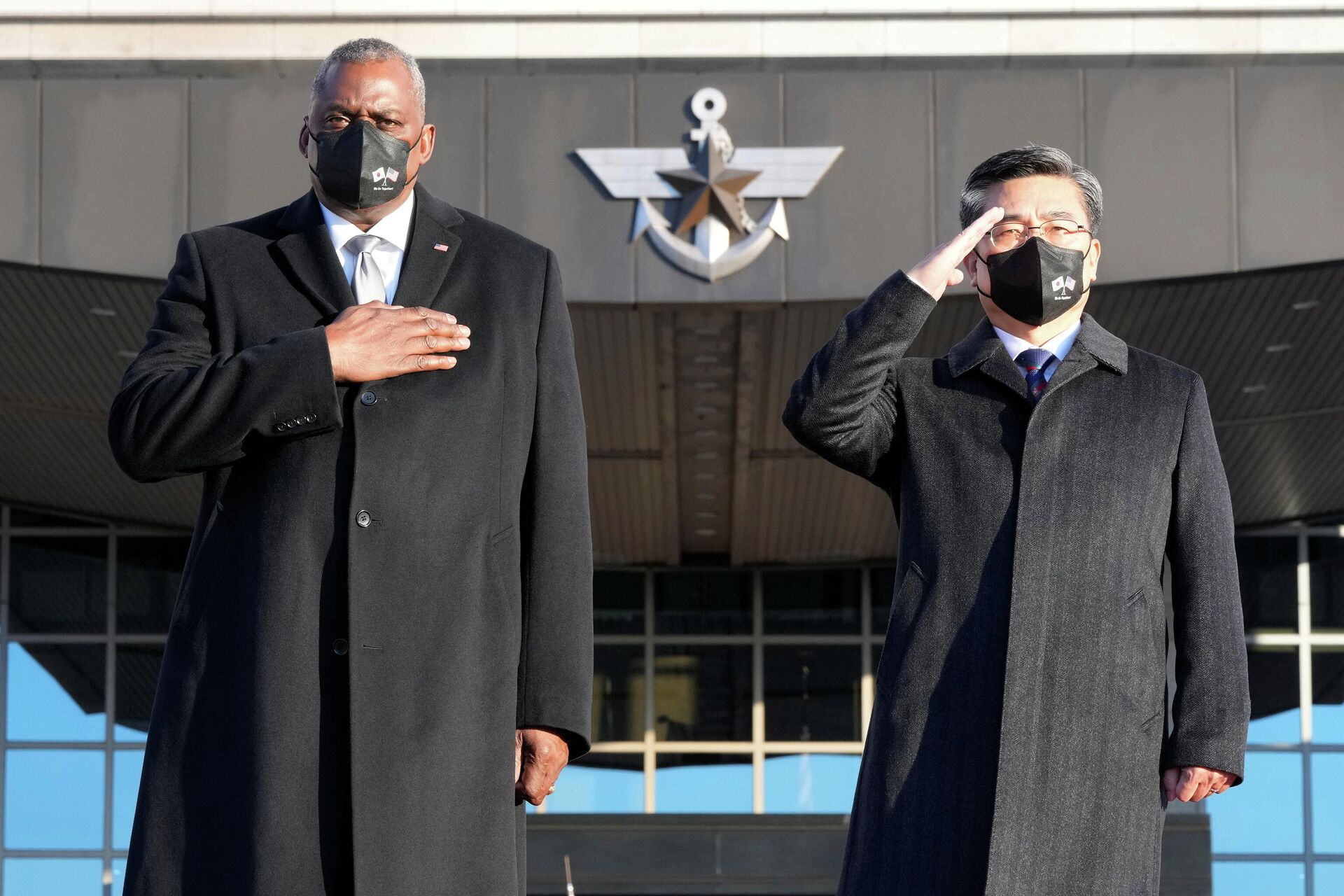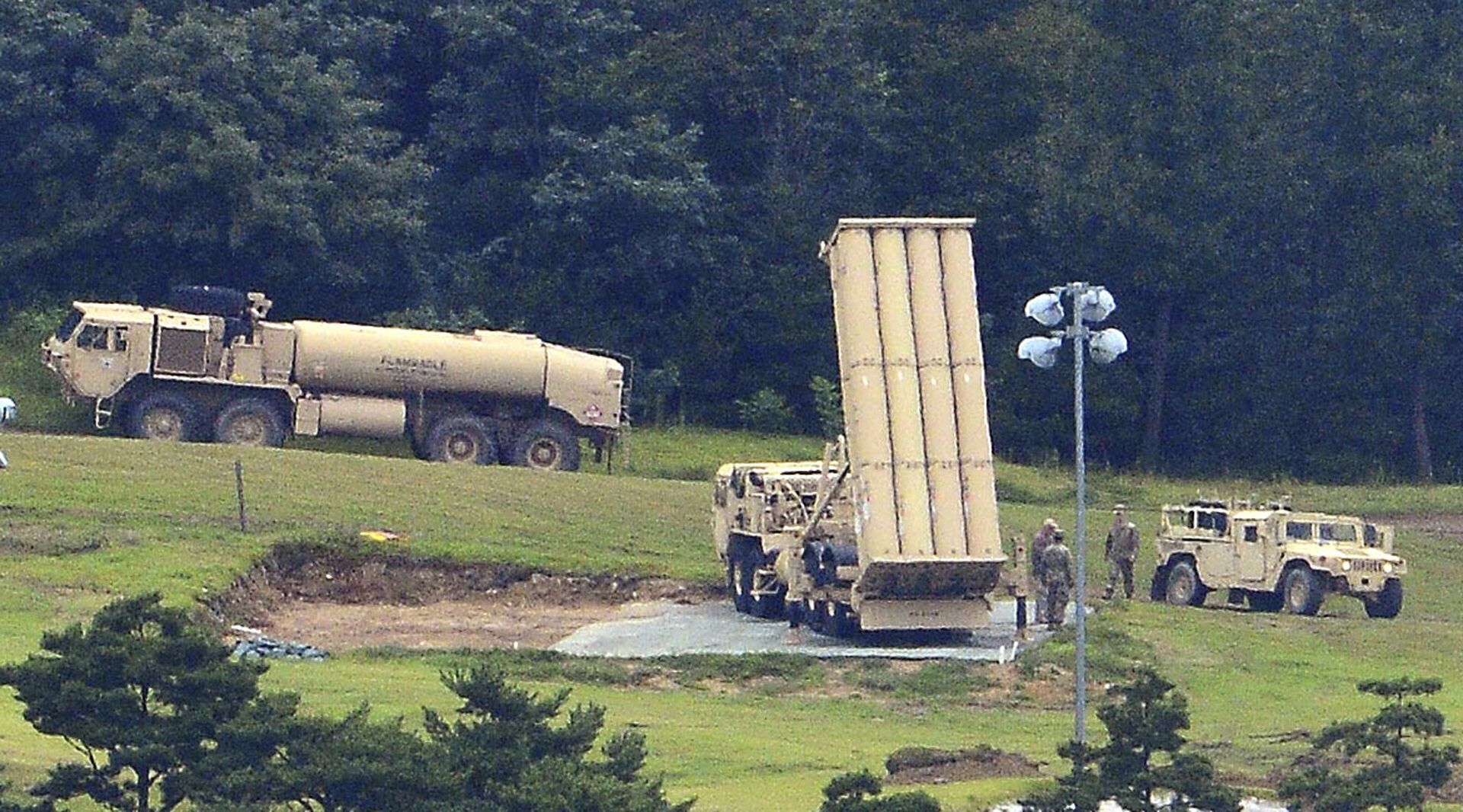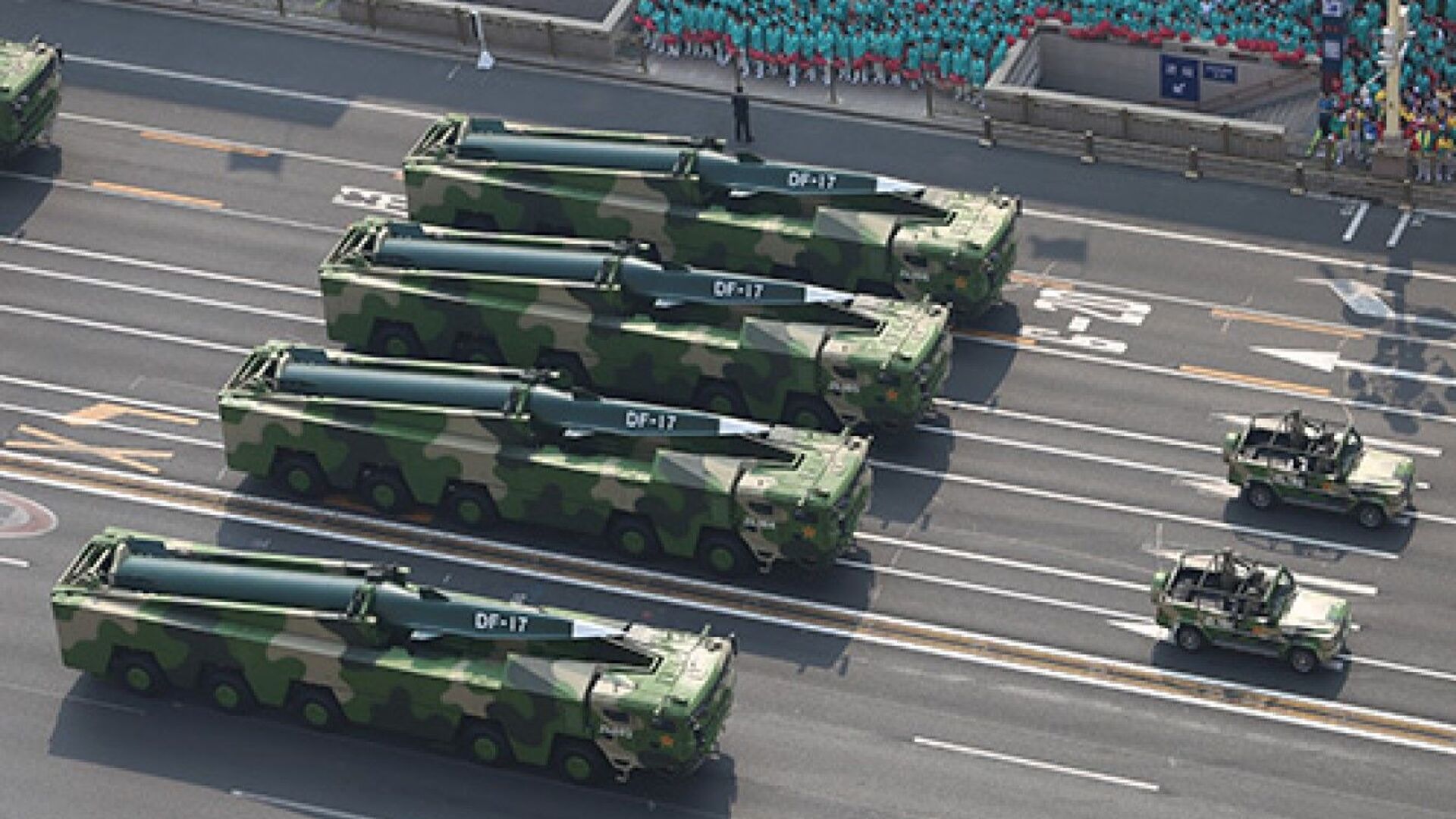Pentagon Chief Slams Chinese Hypersonic Weapons During Visit to Shore Up South Korean Alliance
19:57 GMT 02.12.2021 (Updated: 18:35 GMT 19.10.2022)
Subscribe
The People’s Republic of China (PRC) has developed extensive missile capabilities, including ballistics and hypersonic weapons, but maintains only a very small nuclear arsenal, as well as a no-first-use policy. The US, which lags behind Beijing and Moscow on hypersonics, has claimed their advances are a threat.
Speaking at a US Air Force base 250 miles from Chinese territory on Wednesday, US Defense Secretary Lloyd Austin criticized China’s push to develop a new array of hypersonic weapons, claiming they are increasing tensions in the region.
“[W]e have concerns about the military capabilities that the PRC continues to pursue, and the pursuit of those capabilities increases tensions in the region, and we know that China conducted a test of a hypersonic weapon on the 27th of July,” Austin said at a Wednesday press conference with his South Korean counterpart, Suh Wook, at Osan Air Base.
“It just underscores why we consider the PRC to be our pacing challenge. And we'll continue to maintain the capabilities to defend and deter against a range of potential threats from the PRC to ourselves and to our allies,” Austin added.

U.S. Defense Secretary Lloyd Austin and South Korean Defense Minister Suh Wook salute during a welcoming ceremony at the Defense Ministry in Seoul, South Korea, December 2, 2021.
Osan serves as the headquarters for the US-South Korean Combined Forces Command, the joint command under which the 28,500 US troops deployed in South Korea would fight alongside their South Korean allies in the event of a war with the Democratic People’s Republic of Korea (DPRK) to the north. Austin’s visit this week was part of the CFC’s annual Security Consultative Meeting, at which Austin and Suh discussed developments in their alliance.
In the joint communique the SCM released on Thursday, they for the first time mentioned “the importance of preserving peace and stability in the Taiwan Strait,” the 80-mile-wide waterway separating the PRC on the mainland from the Republic of China (RoC), the government that rules Taiwan.
The strait has been the site of increased tensions in recent months, as the US sails ships through waters China claims to be internal and pens new deals to support Taiwan’s military against China, while Chinese aircraft perform regular drills in airspace off the coast. While the air drills are legal, Taiwan unilaterally claims the right to police the airspace and western media falsely reports them as “incursions.”
China sees Taiwan as a province in rebellion that’s destined to be reunited with the mainland - a position the US supports by way of three communiques in the 1970s and 1980s that laid out the terms of its recognition of the PRC as the sole legitimate Chinese government and not the RoC, which is the last remnant of the Chinese republican government that ruled from 1912 until 1949.
Chinese Hypersonics
The PRC has developed several hypersonic weapons, which can travel faster than five times the speed of sound and often have maneuvering capabilities that make it nigh-impossible for air defenses to intercept. These include cruise missiles and rocket-boosted glide vehicles, neither of which has successfully been tested by the US, but also allegedly a fractional orbital bombardment system (FOBS), according to a Pentagon analysis of two tests in July and August.
Beijing has denied the tests were of a FOBS-style weapon, saying they were for a reusable space plane that would save launch costs for its burgeoning space flight program.
A FOBS poses a unique threat to a country like the US because it would allow China to put a warhead into a fractional orbit - which travels less than one full trip around the Earth - before deorbiting it at the desired location. With US ballistic missile defenses pointed at the northern and western approaches to the country over the North Pole and the Pacific, a FOBS could slip in the “back door” by traveling over the South Pole before coming around to strike its target from the south, where the US has no missile defenses to speak of.
At least, that's how the system developed by the Soviet Union in the 1960s would have worked. However, the Soviet system suffered from many limitations, including being much less accurate than an intercontinental ballistic missile (ICBM) and having to carry a much smaller warhead. It was discontinued in the late 1970s after Soviet strategists determined it wasn't worth the extra trouble, since the US missile defense net wasn't nearly as good as Washington claimed it was.

U.S. missile defense system called Terminal High Altitude Area Defense, or THAAD, is seen at a golf course in Seongju, South Korea, Wednesday, Sept. 6, 2017
© AP Photo / Choo Sang-chul/Newsis
US Beefing Up Anti-China Policies
Washington has looked to rally regional nations into a grand alliance against Beijing ever since it prioritized great power competition with Russia and China in strategy documents published in late 2017 and early 2018. That has included pushing the Quad alliance with Japan, India, and Australia, as well as the new AUKUS defense bloc between the US, Australia and the United Kingdom. It’s also meant to be urging members of the Association of Southeast Asian Nations (ASEAN) to “raise the pressure, frankly, on Beijing,” as US Vice President Kamala Harris put it in September, by wooing them with trade, defense, and vaccine deals.
Biden’s administration, which took office in January, released a summary of its own updated global strategy earlier this week in which it pledged to “advance initiatives that contribute to regional stability and deter potential Chinese military aggression and threats from North Korea.”
Wednesday’s joint communique also noted “efforts to establish the conditions for the stable stationing of the Terminal High-Altitude Area Defense (THAAD) battery at Camp Carroll.” The stationing of the long-range air defense system in South Korea has long been opposed by both locals and China, due to the system’s high-powered AN/TPY-2 X-band radar which, according to one US official, can track a “baseball from about 2,900 miles (4,600 kilometers) away,” or most of the way across China.
A second THAAD system is also deployed on Guam, on the far side of the Philippine Sea from China.





